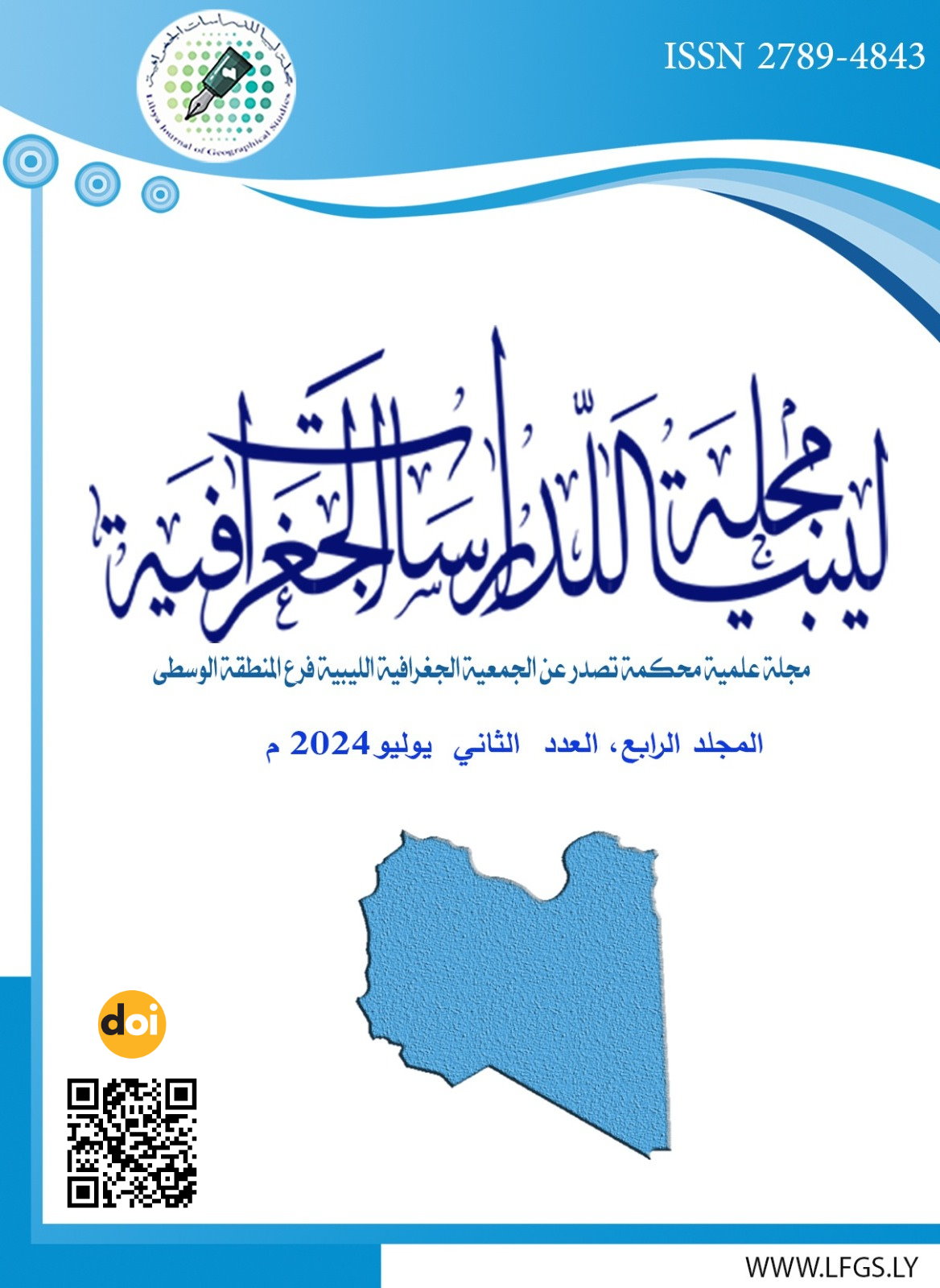Global warming and its impact on rainfall and thermal extremes in two Libyan meteorological stations
DOI:
https://doi.org/10.37375/jlgs.v4i2.2840Keywords:
global warming, rain extremes, thermal extremes, Nalut, GhadamesAbstract
Scientific reports indicate that the problems of global warming appear mainly in the increase in the intensity of thermal and rain extremes, especially in the regions of summer and winter monsoon rain, in the form of prolonged periods of drought, causing the failure of agricultural seasons and exacerbating the problems of desertification. These dry periods are interspersed with some stray rainstorms, causing the flow of devastating torrents. For the infrastructure and the erosion of the soil of agricultural lands, we have an example of the Derna flood in the fall of 2023, as two dams were unable to protect the city from a torrent of rain that reached 420 mm per day, and this number may exceed what is expected to fall in an entire rainy season. Thermal extremes coinciding with rain retention are Others cause forest fires to cover large areas of countries to the point that fire-fighting equipment in developed countries such as the United States, Canada, Russia and Australia are unable to extinguish them, destroying tens of millions of hectares annually and countless numbers of homes and facilities, costing tens of billions of dollars to rebuild. To verify that climate change appears in an increase in the intensity and frequency of rain and thermal extremes in Libya, then use the difference test between two average values of the largest daily amount of rain per year for two periods, the first from 1949 - 1970 and the second from 1971 - 1995 for the Nalut meteorological station. The results of the second test supported the climate change theory with a confidence rate of 95%. The test results also supported that the second period affected by the change is superior to the first period in terms of extremes Rainfall extremes of 50 mm, 40 mm, and 30 mm per day at a rate ranging from double to three times, while the rainfall extreme of 100 mm per day was not recorded during the first period not once, and was recorded twice in the second period. The analysis of thermal extremes at the Ghadames Meteorological Station showed no change in the maximum temperature, but the effect is clear and statistically and graphically significant in the minimum temperature values, in line with the theory of global warming. The first period (1949-1970) was colder than the second (1971-1997) on all scales (-2°C), (-3°C), (-4°C), and (-5°C).
References
- أبو يوسف، محمد، (1989)، الإحصاء في البحوث العلمية، المكتبة الأكاديمية، القاهرة.
- الهيئة الحكومية الدولية المعنية بتغير المناخ، (2007)، تغير المناخ 2007 التأثيرات والتكيف والتأثر .UNEPو. WMO..
- عدس، عبد الرحمن، (1997)، مبادي الإحصاء في التربية وعلم النفس، ط 1، دار الفكر، عمان.
-مراد، محمد مروان جميل، (1998)، التسخين الكوني يخنق مناخ العالم. المدينة العربية. العدد 83 ، مارس- أبريل 1998.
- John Silk: Statistical Concepts in Geography. George Allen and Unwin. London. 1979.
- Maurice Yeates. An Introduction to Quantitative Analysis. In Human Geography . Mc-Graw-Hill Book Company. New York. 1974.
- Newman, J.E.: Climatic Changes: Some Evidence and Implications. Weatherwise. VOL 42. No.(2) 1971.
- National Academy of Science, Climate Research Board, Washington. D. C. 1979. Carbon Dioxcide and Climate: Scientific Assessment.
- Siegel : Nonparametric Analysis for Behavioral Sciences. Mc Grow-Hill Book Comp. New York. 1957.
- Smagorinsky, J., 1983: Effect of Carbon Dioxcide . Changing Climate. Chapter 4., Section 4.1.
- Thom, H.C.S.: Some Methods of Climatological Analysis. W.M.O. Note.81. 1966.














